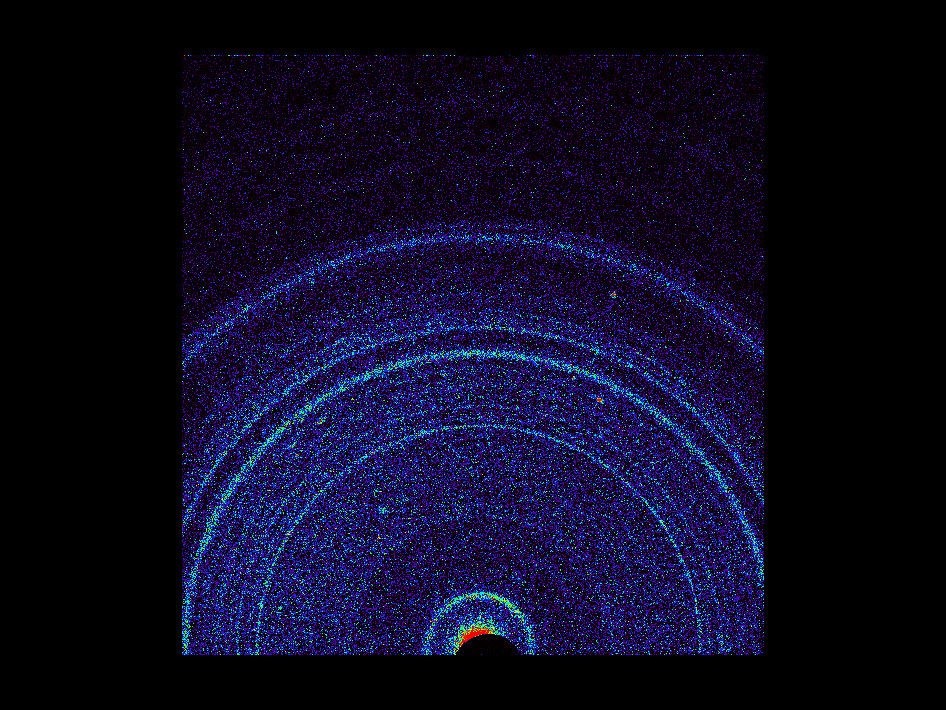

This graphic shows results of the first analysis of Martian soil by the Chemistry and Mineralogy (CheMin) experiment on NASA’s Curiosity rover. Credit: NASA/JPL-Caltech/Ames
Soil scooped up by the Curiosity rover has been analyzed by instruments on board similar to what would be used by geologists on Earth in a laboratory, and the results show the mineralogy of Martian soil is fairly Earth-like, with evidence of past interaction with water. The minerals were identified in the first sample of Martian soil put inside the Chemistry and Mineralogy instrument (CheMin), which were zapped with X-Rays to provide accurate identification of minerals.
“This Martian soil that we’ve analyzed on Mars just this past week appears mineralogically similar to some weathered basaltic materials that we see on Earth,” said David Bish, a CheMin co-investigator with Indiana University, during a press briefing on Tuesday, saying the soil appears similar to weathered basaltic soils of volcanic origin in Hawaii.
The results weren’t too surprising, the team said
Other Earth-like references have been made about Mars recently: In an op-ed article in the New York Times, MSL project scientist John Grotzinger said some of the rocks Curiosity has studied early in the mission are reminiscent of rocks Grotzinger “skipped” across a stream near his childhood home near Huntingdon Valley, Pennsylvania. And a team of researchers from Spain said the rocks where Curiosity is roving are similar to those found in Cuatro Ciénegas, a Mexican valley that may be an Earthly analog what Gale Crater was like millions of years ago.
Curiosity’s mission is to determine if Gale Crater ever offered environmental conditions favorable for microbial life, and so identifying minerals in rocks and soil is crucial to assess the history of this region. Each mineral records the conditions under which it formed.
CheMin uses X-ray diffraction, the standard practice for geologists on Earth using much larger laboratory instruments, and this is the first time this method has been used on another planet. It provides more accurate identifications of minerals than any method previously used on Mars. X-ray diffraction reads minerals’ internal structure by recording how their crystals distinctively interact with X-rays.
“Our team is elated with these first results from our instrument,” said Blake. “They heighten our anticipation for future CheMin analyses in the months and miles ahead for Curiosity.”
A MastCam image of Rocknest. Credit: NASA/JPL-Caltech/MSSS
Curiosity scooped dust and sand in the small dunes named Rocknest. The sample was processed through a sieve to exclude particles larger than 0.006 inch (150 micrometers), roughly the width of a human hair. The sample has at least two components: dust distributed globally in dust storms and fine sand originating more locally.
“Much of Mars is covered with dust, and we had an incomplete understanding of its mineralogy,” said Bish. “We now know it is mineralogically similar to basaltic material, with significant amounts of feldspar, pyroxene and olivine, which was not unexpected. Roughly half the soil is non-crystalline material, such as volcanic glass or products from weathering of the glass. ”
Bish said, “So far, the materials Curiosity has analyzed are consistent with our initial ideas of the deposits in Gale Crater recording a transition through time from a wet to dry environment. The ancient rocks, such as the conglomerates, suggest flowing water, while the minerals in the younger soil are consistent with limited interaction with water.”
These results are consistent with the previous determination by the MSL science team that ankle-to-hip-deep water once vigorously flowed in an ancient streambed in Gale Crater.
Source: JPL
Astronomers have been battling threats to their clear skies on all fronts lately. One of…
If you were Captain of the first USS Enterprise, where would you go!? Humanity is…
Now is the best time to observe Mars in 2025. Mars from 2014. Credit: Paul…
Scheduled for launch in 2027, the Nancy Grace Roman Telescope is slowly being readied for…
Few places in the solar system are better suited to a balloon than Titan. The…
We reported before about a NIAC-funded project known as the Lofted Environment and Atmospheric Venues…